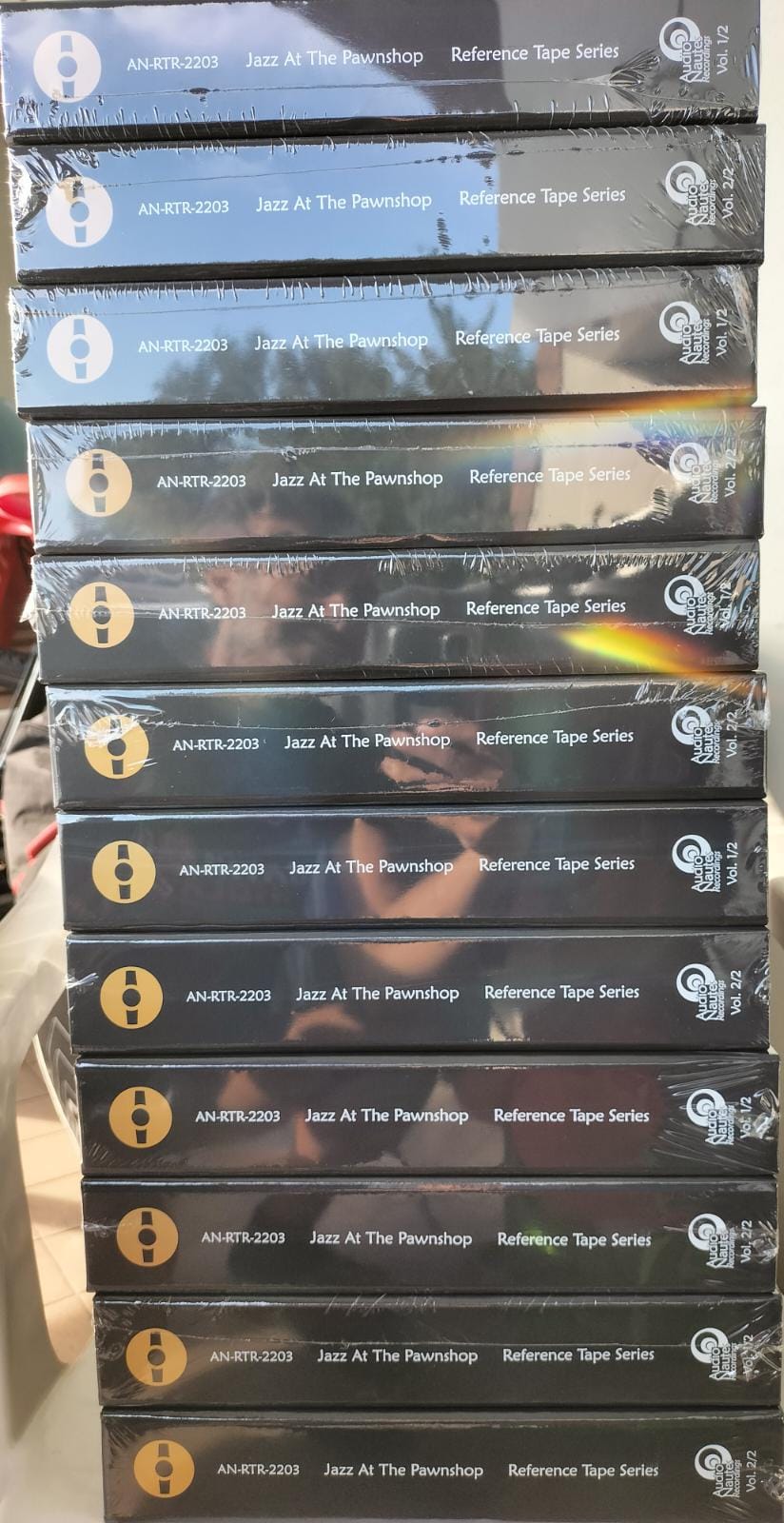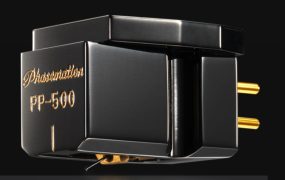It isn't just every day that a hardcore audiophile disguised as an audio reviewer meets living high-end audio legend. In fact, there's no doubt that some present day Positive Feedback readers were just a glean in their parents' eye when Aalt Jouk (A.J.) van den Hul built his first cartridge some 50 years ago. No matter. While this isn't the first time that A.J and I have met—the first being almost 20 years ago at the London Heathrow Show—our meetings sadly have become all too infrequent. A.J.'s thoughts, insights and opinions on all matters audio—especially analog—are always thought provoking.
Thanks to the efforts of North American van den Hul product distributor Randy Forman of Finest Fidelity, I had an opportunity to sit down and chat with the grandfather of cartridge design earlier this year at Axpona 2017. Still spry and energetic at 79 years young (no doubt in part due to his healthy living), A.J. remains sharp as tack and a treasure trove of information. Some might say a virtual walking encyclopedia. A.J. still builds around 300 new cartridges and rebuilds another 700 cartridges a year (with an incredible door-to-door turnover time of only 2-3 weeks). Weekends in A.J.'s household are set aside for building cartridges; A.J. estimates he spends roughly 1800 to 2000 hours a year constructing cartridges.
So where better to kick off a discussion about cartridge design, vinyl playback and the Dean of cartridge's latest generation of Colibri cartridges than with,
MBA: Did you ever think analog would still be around in 2017? Certainly even the most die-hard analog person had to admit they had doubts at one time or another.
AJ: I realized I had to make a decision in 1980: digital or analog? I listened to the first player and decided on analog. [Harry Weisfeld of VPI tell a similar story of a digital manufacturer asking him at a CES Show in the mid-80s what he was going to do. Punch line: VPI is still around and this digital manufacturer is history—MBA.] There are more turntables today than in analog's heyday. Through the dark days of analog: Audiophiles need something to play with. They are committed to the hobby.
MBA: Tell us a little about your travels around the world meeting analog lovers.
AJ: England and Germany have the highest concentration of analog audiophiles. Less so in Asia. It is more of a statement there. Not as much enjoyment. Status is very essential in Asia.
MBA: Is there a younger generation?
AJ: Their appetite for analog taken mostly away by digital. Though always willing to share [my] knowledge with my younger generation: my son William is energetic and involved in building new units.
MBA: Is there ever a moment in the day when you're not thinking about cartridges?
AJ: It became a tradition for me to make a new cartridge design every 2 years on Christmas. Last year's Christmas, the Colibri Signature Stradivarius was made. [I will add that A.J. is besides audio and his medical work intimately involved in a number of charitable causes too!-MBA]
MBA: Tell the readers a little bit about what goes into building a cartridge.
AJ: You need to be a peaceful person to make cartridges and also must have healthy lifestyle. I build the new cartridges early in the day when I am fresh: one with the cartridge. Once you start building a cartridge, you can't stop. Consistency equals experience. And I do nothing for 48 hours after travelling because of carrying luggage that affects hands. Instead, I spend time catching up on emails, laundry, etc.
MBA: What do you see as the biggest area of improvement in cartridges?
AJ: The biggest area of improvement was the stylus. I still use the same shape as in 1975. But I never received royalties for it either. The design was later, when all patent work and acceptation was done, claimed by Geiger who appropriated my work.
MBA: One thing that audiophiles tend to forget is that their cartridges are only as good as the tonearms they are mounted in (and the cartridge/tonearm interface). Is there a reason you never designed your own tonearm?
AJ: There are actually too many good tone-arm manufacturers to compete with. More than compared to cartridge manufacturers. Therefore, I stay in my area of expertise.
MBA: What tonearm (s) do you use for reference in your factory?
AJ: I use SME V for reference arm. If it [the cartridge] does well here, it will work in all other arms. And I specifically use the Technics EPA 100 for measurements.
MBA: How did you begin in the cartridge business?
AJ: I modified around 1000 EMT cartridges in the beginning. That was also the start of my first design. I designed the VDH-1 stylus because the regular stylii were damaging my records. The VDH-1 stylus didn't damage LPs even though some claimed this. I replaced multiple styli and modded EMTs, Ortofons and Goldrings back in the early days. Now, I don't supply any cartridges to other manufacturers any more.
MBA: That's not the only thing that dates back to the '70s in your cartridge is it A.J.?
AJ: No. The elastomer goes back to the '70s. I made a large batch up, cryogenically froze it down and periodically go back to the freezer to remove a small batch to make new or repair cartridges.
MBA: How do you do maintain cartridge quality control?
AJ: Every time I want to do better. With the new units, I have reached over the years a much better consistency. But I am always looking for ways how to improve any detail. Actual consistency depends upon "positioning parts." This is the most difficult part of hand building a cartridge. All effects channel balance, crosstalk, and spacious reproduction.
I adjust channel balance within 0.1dB; then crosstalk. Also, the lowest distortion at higher tracking level. When all is done well, I am playing several critical records to get the best sonic quality. If the newly made unit doesn't meet specs puts, I put it aside and replace its parts. A problem could be as innocuous as an, "air bubble" in damper that can affect frequency response.
MBA: Speaking of building new cartridges, you brought your newest effort the Colibri Signature Stradivarius to Axpona 2017.
AJ: The first Colibri cartridges were produced in 1995-96; over 1000 Colibri's were made in the mean time. The last modification to the Colibri was a change to the magnetic circuit where I brought the sonic quality to tape level when the original recording cut was made well.
Colibri Signature body has a special coating, also sanded outside. The external structure is different than on inside. Looking at the harmonics of scratches, it produces a reducing body coloration. More natural sound with more space for the acoustics during the listening.
The application of The Extender helped here a lot. Without The Extender, there was no change to have The Colibri Signature Stradivarius.
The drying schedule looks like this:
- 4 weeks for first layer
- 4 weeks for second layer
- 4 weeks for third layer
- This is followed by an additional three months of air curing and hardening process
Most MC cartridges can produce a standard output with actual magnetic. Their output can be equal to twice the value of the standard Colibri. The [new] Colibri Signature Stradivarius has now the double of the output of a standard MC cartridge: 0.70 mV /5.6 cm/s. This steeper modulation-output curve improves the dynamics.
MBA: I thought it was interesting that you used Gold, not Copper wire, to wind the Colibri's coils. What led you to that?
AJ: A "slowly" drawn gold-wire sounds better compared to the regularly "fast" drawn copper-wire. I use a 20 to 25 micron soft gold-wire for winding and find it better for very low level conducting. This Gold wire is drawn at extremely slow speed (this isn't actually new as A.J. and I talked about drawing speed and its effect on the sound back in the '90s—MBA.) This maintains much better the integrity of the conductor; around 5 cm/second, there's no mechanical drawing variations modulations and dramatically improved analog sound. Higher drawing speed adds extra crystal boundaries. Lower speed decreases number of crystal boundaries and layers and gives therefore a purer sound. The quality of the wire makes or breaks the final result after all other work on components and construction is done well.
Soft metals have a high number of free electrons. This combined with a very high purity, produces the best sound specific on very low signal level like concert hall acoustics. Actually, I am working on a graphene conductor to increase number of free electrons. It must be treated with care. Both parameters must be maintained: Increase the mechanical strength and at the same time decrease the impedance.
MBA: Another unique feature of your Colibri Stradivarius and Stradivarius Signature cartridges is the cantilever length and the absence of a front pole piece. What are the advantages of this design?
AJ: The Colibri is an Unipole Modulator: Standard is rearly positioned in the magnetic center or moves symmetrically in the magnetic field. The final electrical result is the sum of both magnetic modulators. This, however, causes a difference in modulation. That's reason enough to work only one magnetic pole. By shortening the cantilever, the sonic result is better pulse response and an extended frequency range.
The applied cross-coil comes, thanks to the shorter cantilever, closer to record. This was an issue in the beginning. To solve this problem required playing the with tracking force, compliance and suspension. Initially, I used a 2.5 mm long cantilever but the cartridge had a problem tracking the record. After some experiments, I settled on 3.5 mm cantilever length for the whole Colibri series.
It is common to set the antiskating when tracking at minimal 70 micron or higher. The standard record cutting is between 20 to 40 microns. The incorrect antiskating setting causes standard a worn right side of the stylus what causes too soon record damage. The left side of the stylus is still very well shaped without a worn diamond "plane."
MBA: A.J., one last message for our readers about their cartridges!
A.J. "Cartridge and arm like men and women: minimize the mismatch!"




































